So far in my survey of sisters, I’ve felt they are far more likely to be criminal in literature and fiction than they are in real life. Women, in general, commit less crime than men, so sisters engaging in criminal activity together can’t be too common. I’ve already written about the Papin Sisters, but didn’t expect to find many - if any - comparable sister stories… and I certainly didn’t expect to do so this week when I was in the National Library of Scotland researching something completely not sister-related at all. But as I now have a huge cognitive bias toward sisters, was it really any wonder that this jumped out at me?
Here’s the full story story:
This horrid transaction (relative to which a brief account of the principal circumstances has already appeared in the Public Papers) has excited a stronger sensation, and become a more general subject of conversation, than any murder which has hitherto blackened the annals of crime. The ill-fated young women who are the subject of this narrative, are said to be natives of Beverly, from which place their parents removed some time ago into the county of Bedford.
These two unfortunate sisters, one of whom was 18, and the other 19 years of age, had resided more than two years with Mrs Bland, their aunt, at Hockliff, in the county of Bedford, and followed the business of Mantua-makers, and were much respected till within a few weeks of the atrocious deed which hurried them into eternity. They had formed a connection with several young men, notorious for gambling and poaching. It appeared in evidence, that the deceased Mrs Bland, was aunt to the unfortunate Mary and Elizabeth Marlow, and that considerable property at Mrs Bland’s death, would fall to her nieces.
On the 16th of January, about eight o’clock in the morning, Mary Marlow ran in great haste to a neighbour’s house, whose name was Burton, and said, her aunt was taken suddenly ill, and would thank her (Mrs Burton) to step into the house. On Mrs Burton’s entering the house, Elizabeth Marlow said, “Oh Mrs Burton my poor aunt is dead.” The sisters several times exclaimed, “We have lost our best friend.” Six medical gentlemen were called, who declared the body had been dead some time and discovered that some small instrument had entered her left side, and passing through her heart, caused her death. The jury returned a verdict of Wilful Murder against Mary and Elizabeth Marlow, and the Coroner committed them to Bedford Gaol for trial at the last assizes. For this awful and atrocious crime they were both found Guilty. The Judge, in passing sentence said, their guilt placed them beyond the reach of mercy, and begged of them to seek mercy at the hands of God, who alone could pardon their sins. They were deeply affected and fainted away.
On Monday morning last, about eleven o’clock, they were both brought out on the drop, and after praying fervently for several minutes, and affectionately embracing one another, were launched into eternity. After hanging the usual time, their bodies were delivered for dissection.
Eagle-eyed readers will notice that the top of the article promises to include the sisters’ “melancholy lamentation.” It’s so bad I can’t face transcribing it, but in the interests of full disclosure, here it is:
Since working on this, I’ve found myself wondering about the murder weapon. Mantua-makers are dressmakers… so maybe a long pin… a hat pin maybe? And maybe it’s just me, and yes, I know the period is wrong, but I’ve a strong Agatha Christie feel about this story. Naturally, I tried to find out a bit more about Mary and Elizabeth but all the internet has given me is a different broadsheet held at Harvard Library which doesn’t have the commonly used woodcut of a hanging, or the touching detail of the sisters’ embrace on the scaffold. It also says they died on a Saturday, not a Monday, and omits any mention of post-mortem dissection. Weird really. I wonder what really happened? The terrible Lamentation made the cut though. I guess tastes change.
Broadsheets, printed on thin, cheap paper, were sold by street hawkers for as little as a penny or ha’penny and often don’t bother with useful things for future readers… like dates. They do though give a picture of a growing fascination with news, particularly crime news. Here’s just a selection of headlines that caught my eye.
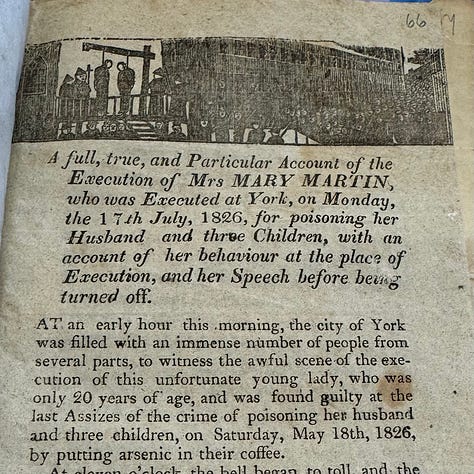
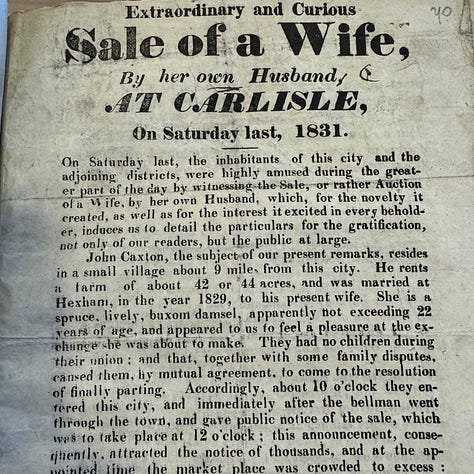
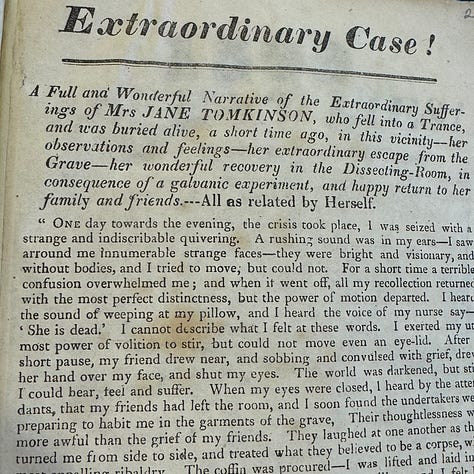
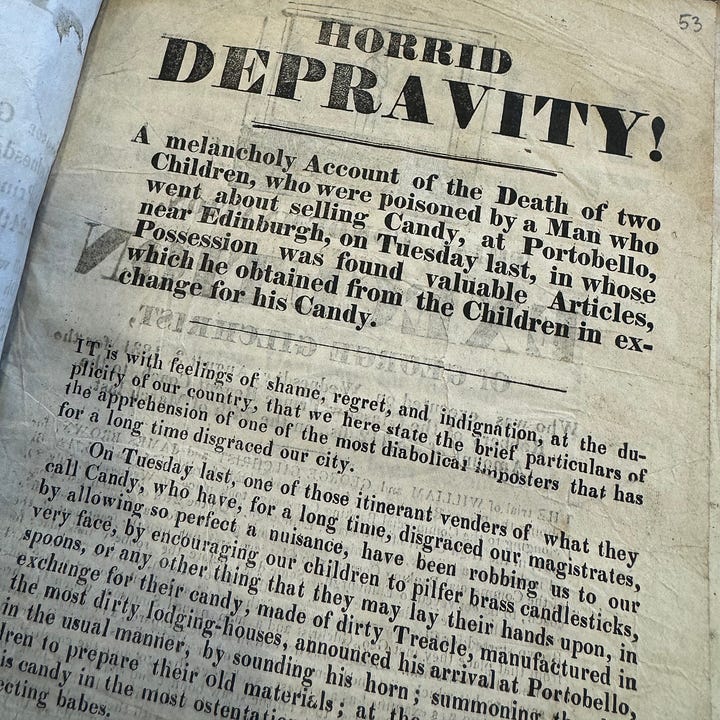
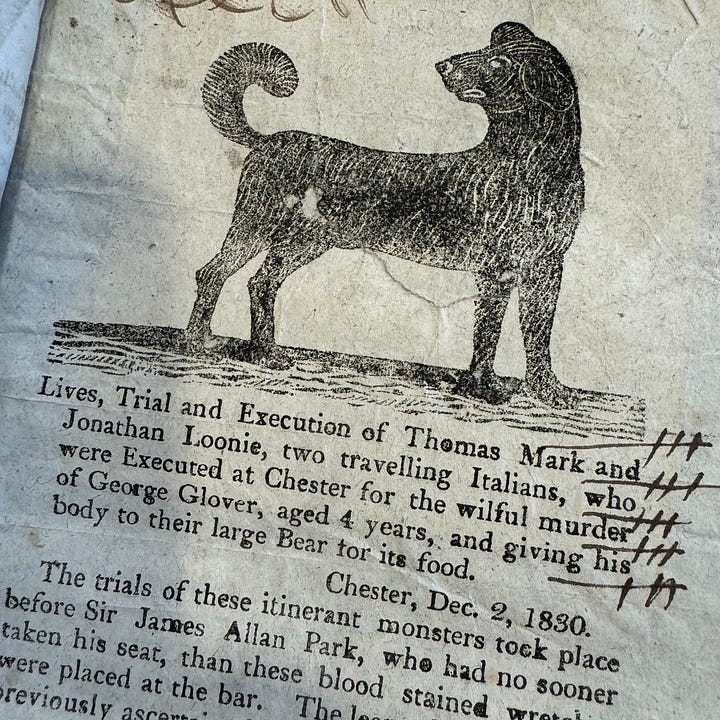
Ah yes, the good old days… when wives were for sale by public auction, women were buried alive, and children were poisoned by their mothers, or by candy sellers, or killed by travelling Italians to feed their large bear.
As is the way of things, while I was looking for more intel on Mary and Elizabeth Marlow, I came across another pair of dastardly sisters, and if you are a parent, or feeling at all squeamish or sensitive, I suggest you stop reading right now. I’m a historical novelist who enjoys a bit of crime and mystery. I like working out why people might have done the things they did, and filling in the gaps in what history tells us. But Margaret Waters and Sarah Ellis were really too awful to spend much time on. Living in mid-nineteenth century Brixton, the sisters acted as baby farmers, taking unwanted babies off the hands of mothers or their families, for a price, with a promise of finding adoptive families. They didn’t care for them however. Possibly as many as nineteen infants were dosed with laudanum and gradually starved. Margaret Waters was found guilty of murder and executed in 1870. Her sister Sarah was acquitted of murder but jailed for eighteen months for taking money under false pretenses. My feeling is that Sarah got off pretty lightly.
For more about Broadsides in Scotland, go here.
And for Broadsides in America, try here.






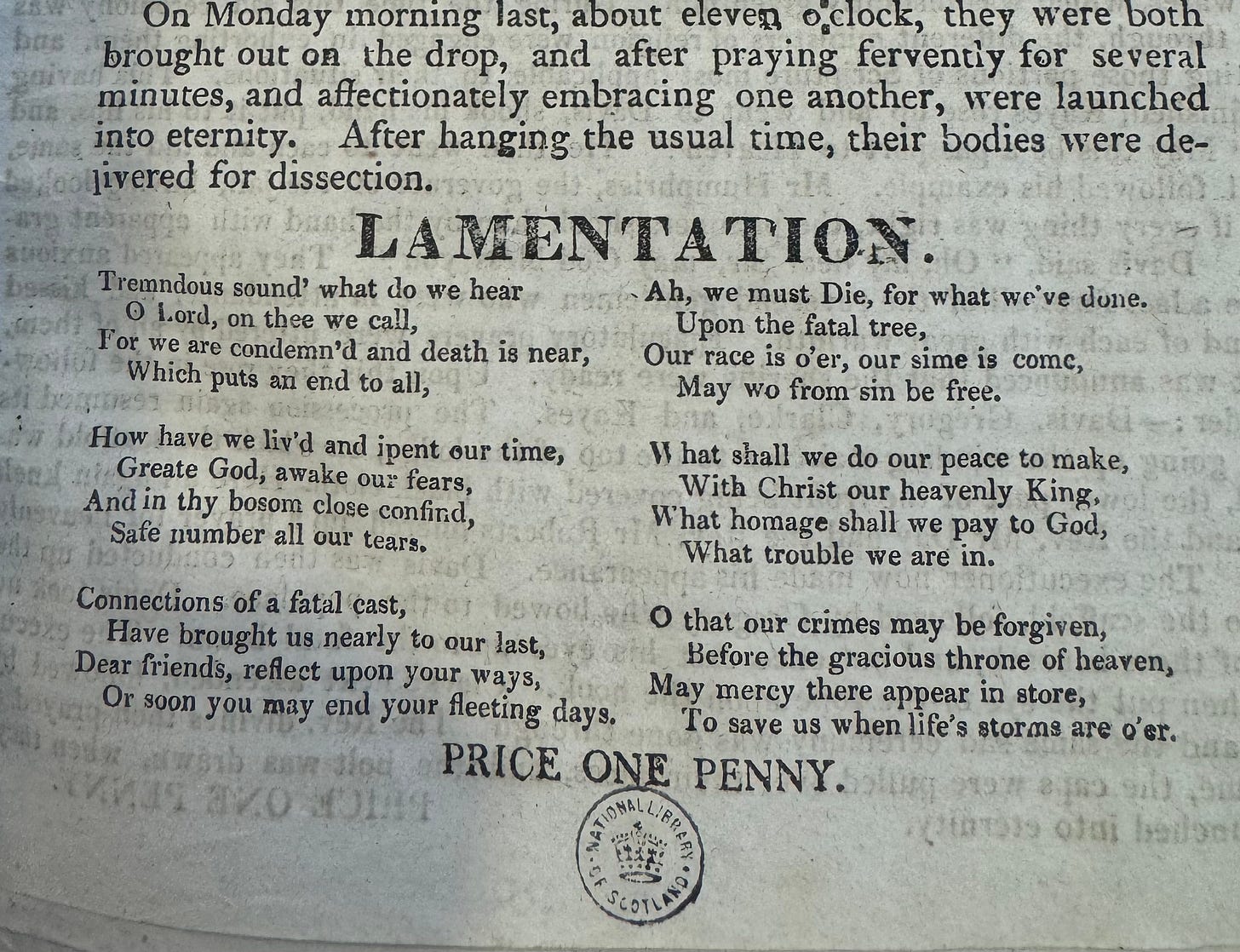
I go through periods where I read true crime, and it may be several books in a row. I am curious why they do what they do. I wonder with it being two sisters, if one of them was the instigator and the other was compliant and enticed to participate in the crimes?